Schlink Hut Walking Track NSW (23.1km)
Kosciuszko National Park
Nearest Town
Jindabyne, NSW
Best Time of the Year to Travel
- For newer hikers – November-late March
- For experienced hikers who can cope with snow conditions and navigation off trail – year round
Starting Location
Guthega Power Station public car park, NSW
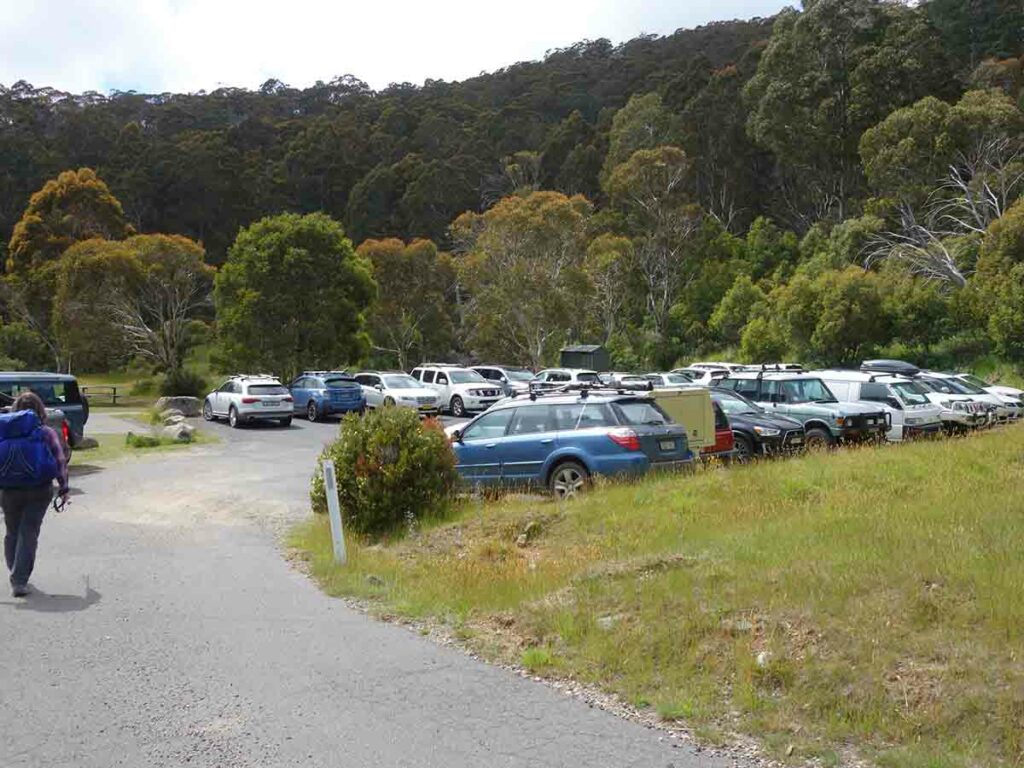
Finish Location
Guthega Power Station public car park, NSW
Schlink Hut Walking Track Review
The walk to Schlink Hut can be done as a single day walk for those with a bit of speed and stamina who are walking light, or for the majority of people as a multi-day walk. How fast you do this walk is really going to be up to you but for most people it will be a two-day return journey. This walk consists of three designated Alpine Huts along with a private hut for the Snowy Hydro Scheme that is worth a quick visit. The walk can be broken down into smaller sections with return walks to the Horse Camp Hut at 7.8km return, or the Whites River Hut at around 17km return.
The Schlink Hut walk starts at the Guthega Power Station visitor car park. The car park accommodates around 20 cars in designated parking spaces although on the day we were there three cars had been parked creatively on the grassy areas near the entry to the car park and others were parked along the road.
We visited just after Christmas at around 11:00 am and managed to snag the last parking space. The following day when we returned from the walk it was even busier. Keep in mind that with so many people doing overnight camping during the warmer months, it is worthwhile getting there early otherwise you will need to park along the edge of the entry road.
Start the walk by heading across the bridge and around the back of the power station – you will see an access road the heading up the hill. This road, Schlink Trail, is your companion all the way to Schlink Hut. The first couple of kilometres up the hill is the most difficult part of this walk – it is steep but with a steady grade. Following this road is pretty easy but the only area of doubt is when it starts to flatten out and you come across a Y branch; at this point veer towards the right.
Your first destination is the Horse Camp Hut about 3.9km in from the start of the walk. The first indication you are approaching this hut is that you will cross a concrete causeway and approximately 500 metres further on, you will come to a road on the left and a sign that indicates Horse Camp Hut is 400 metres away. Its not a big detour so you should stop in and visit. This is one of the best maintained huts in the alps. It’s a very attractive hut with well mown grassy areas that are reasonably flat with lots of options for camping. Just remember that the alpine huts are for emergency use only so don’t plan on sleeping in them unless absolutely necessary.
Return back to the main trail and turn left back onto Schlink Trail which will take you to your next destination which is the Whites River Hut around 8km from the start of the walk. When we did this walk we saw another unmarked hut on the way to the Whites River Hut which turned out to be a Snowy Hydro facility rather than a public hut. I walked down to have a look which only added about 250 metres to the walk before heading back to the main trail. Whites River Hut is around another 1km past this small hut – it is very obvious on the left and visible from the trail. Again this hut is worth a visit and along with the Horse Camp Hut won’t be as busy as your destination of Schlink Hut. Depending on how many days you plan on doing this walk, it’s a good option to a stop at Whites River Hut given are also good areas of flat ground to spread out.
Back onto the main track and you have around 1.5km to reach the high point of the walk at Schlink Pass which is around 1800 metres. This is your best option for phone signal (Telstra) if that’s a concern although data signal is pretty weak. From Schlink Pass you have a further 1.5km to reach Schlink Hut which is again located on the left hand side of the road. Schlink Hut is one of the larger huts on the track and it definitely looks like an old homestead. When we arrived at Schlink Hut there were around seven tents spread out around the hut. The ground around Schlink Hut is sloping so locating a flat piece of ground to put a tent up isn’t easy. Out of the three huts you visit on this walk this is the poorest in relation to flat campsites.
Usually the park services like you to camp well away from the huts but they also don’t like you bushbashing to set up a tent site. In all three cases you are camping within about 50 metres of the huts if not closer. Each hut also has its own composting toilet but there was no paper, so bring your own.
Be aware that there is a potential for snow in just about any month of the year in the high areas of the Australian Alps. While it typically doesn’t sit on the ground for long during the hotter months, the temperatures can drop below freezing. When we camped in late December the night Tim temperatures dropped below 0° celsius and we had ice on our packs and other gear not inside the tent the next morning so come prepared for icy conditions along with extreme heat.
The walk to Schlink Hut is on management road and you will cross water sources every couple of kilometres so you don’t need to carry more water than what you need for the day. We recommend that if you are using natural water sources you should filter it.
Animal life was reasonably limited but we did see lots of birdlife, the occasional wallaby as well as good insect life. On the downside, the March Flies are active during the warmer months in the alps so while it’s tempting to wear shorts and short sleeves, its best not to.
Our return trip back from Schlink Hut was shorter than the trip out as we didn’t make any detours or visit any of the other huts. After leaving Schlink Hut at 7:15 am we arrived back at the Guthega Power Station at 10:30am after three hours of walking. The trip out took us just well over four hours due to steep climb and the hut visits. While it would have been nice to have some formed trail rather than management road to walk on, this was still an enjoyable walk and a great opportunity to explore some of the alpine huts. It’s also a good opportunity for some remote area camping.
For the average hiker looking at doing this walk, late November through to the end of March is the ideal time. People will also ski/snowshoe out to Schlink Hut in the snow season but the track is not well marked and I have seen photos showing around 3m+ of snow around the hut so wintertime hikes should only be done by those with good experience in back country wintertime travel.
Overall a good walk that’s easy to navigate and shows off some lovely alpine huts. While I wouldn’t necessarily repeat this walk, it’s worth doing at least once and has encouraged us to go back and do more exploring.

Just some of the trail signage at the trailhead car park
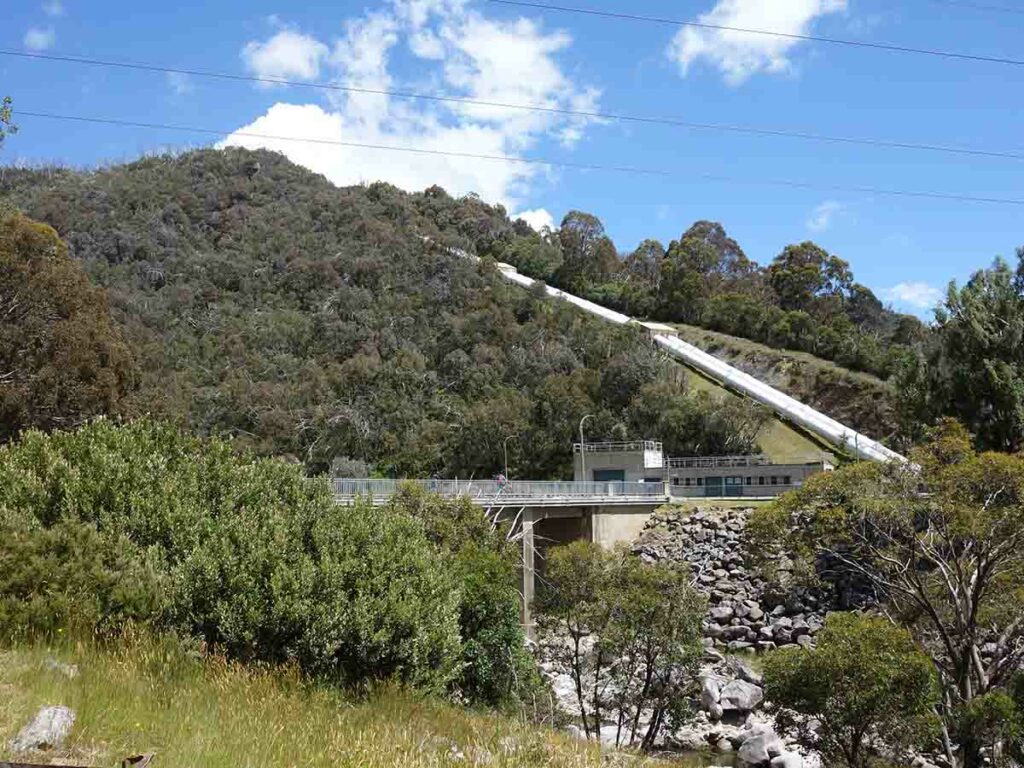
Guthega Power Station

Crossing the river to the power station
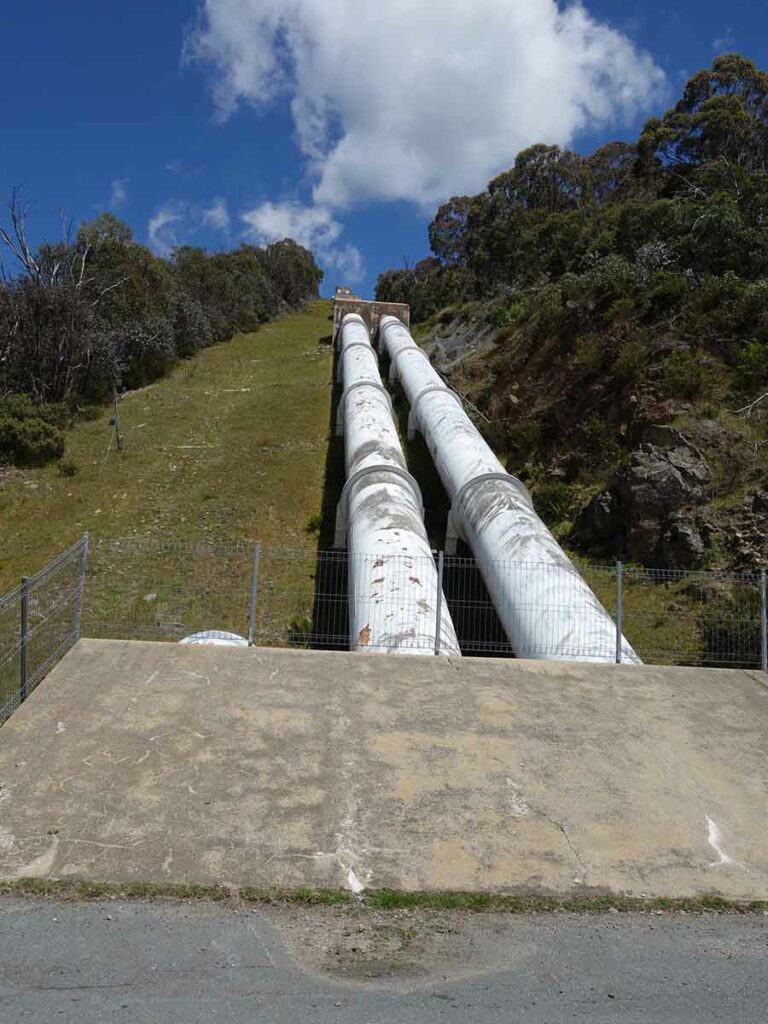
Dam piping heading up the hill
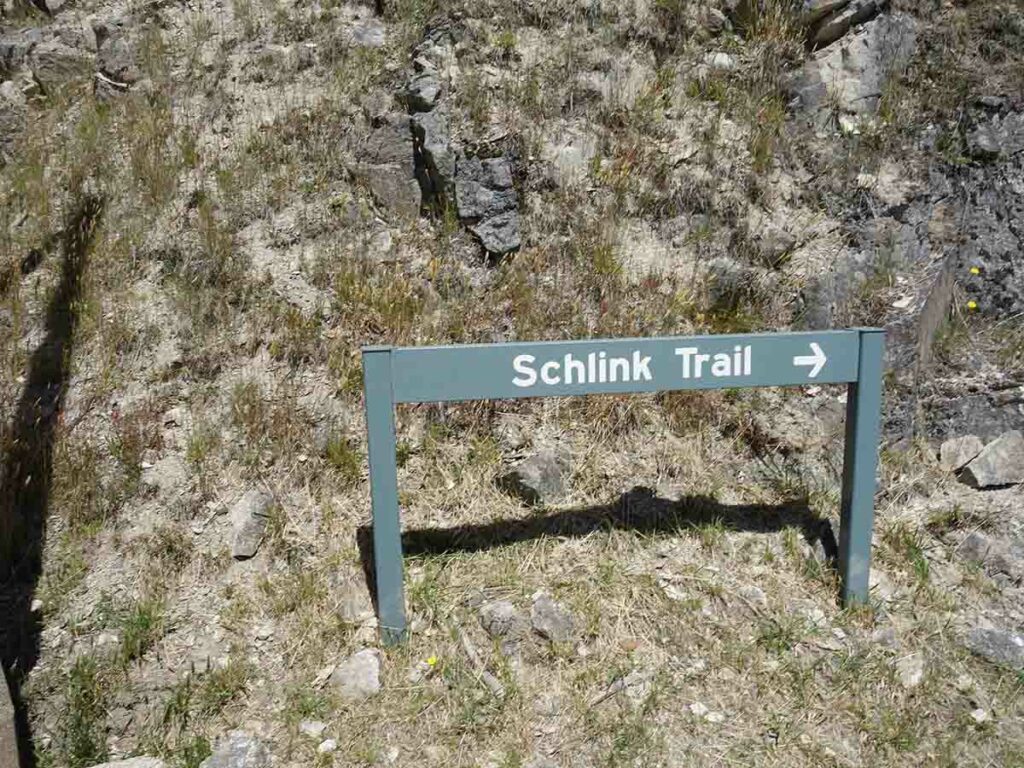
Trail sign at the start of the trail
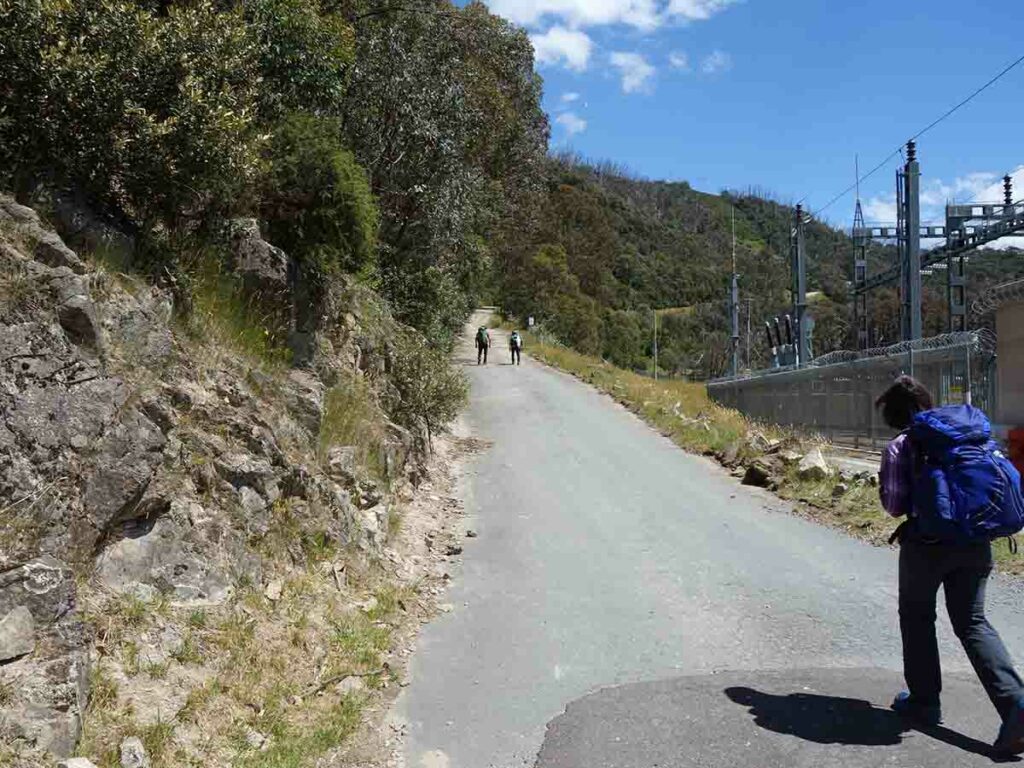
Heading uphill at the walk start
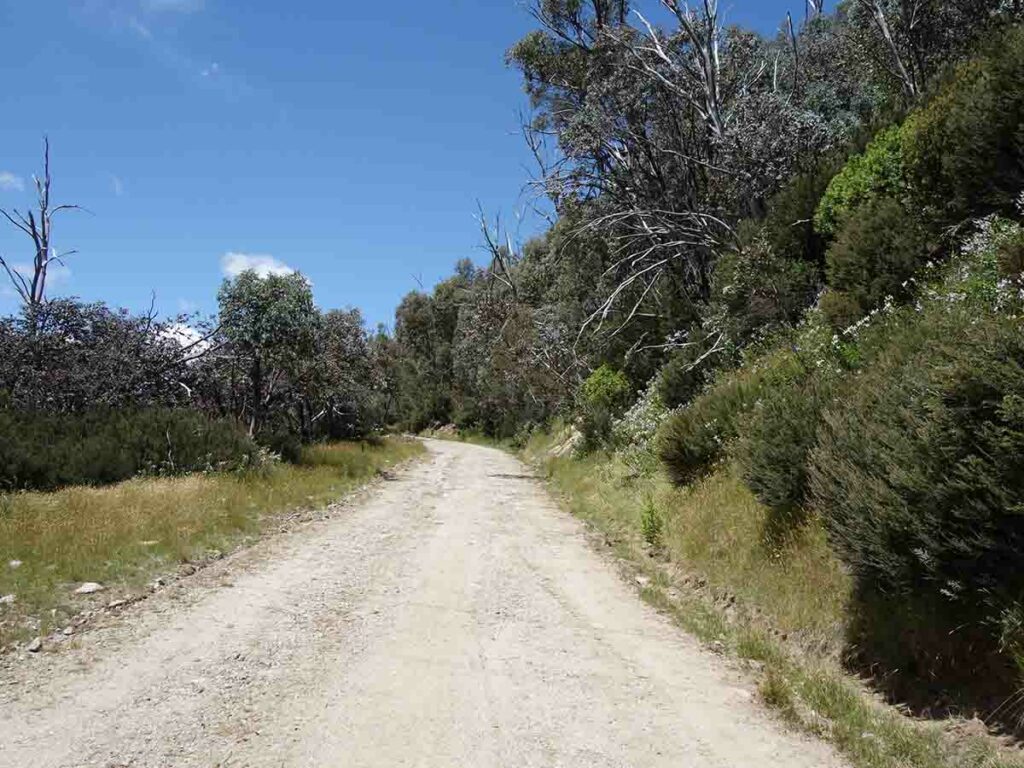
Trail example going up the hill
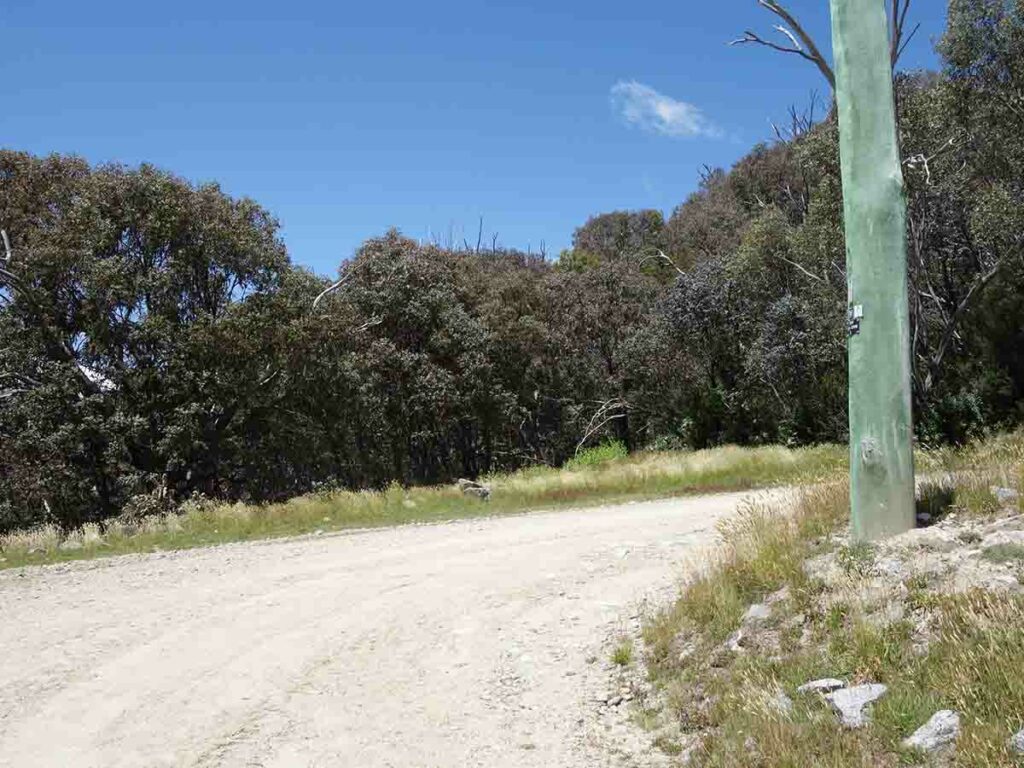
Switchback on the initial uphill ascent
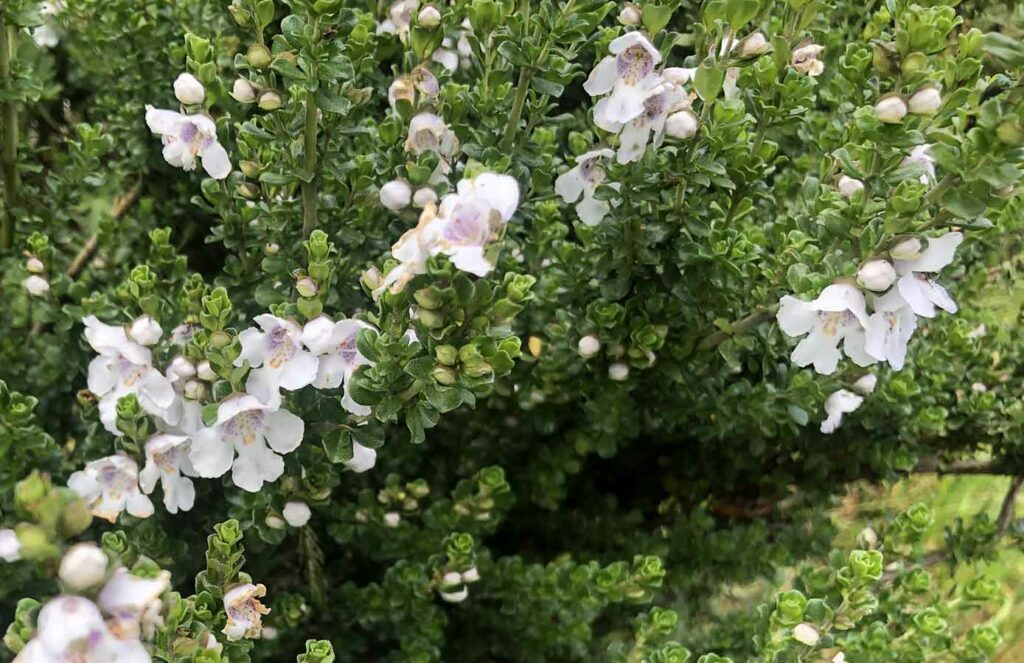
Native flowers
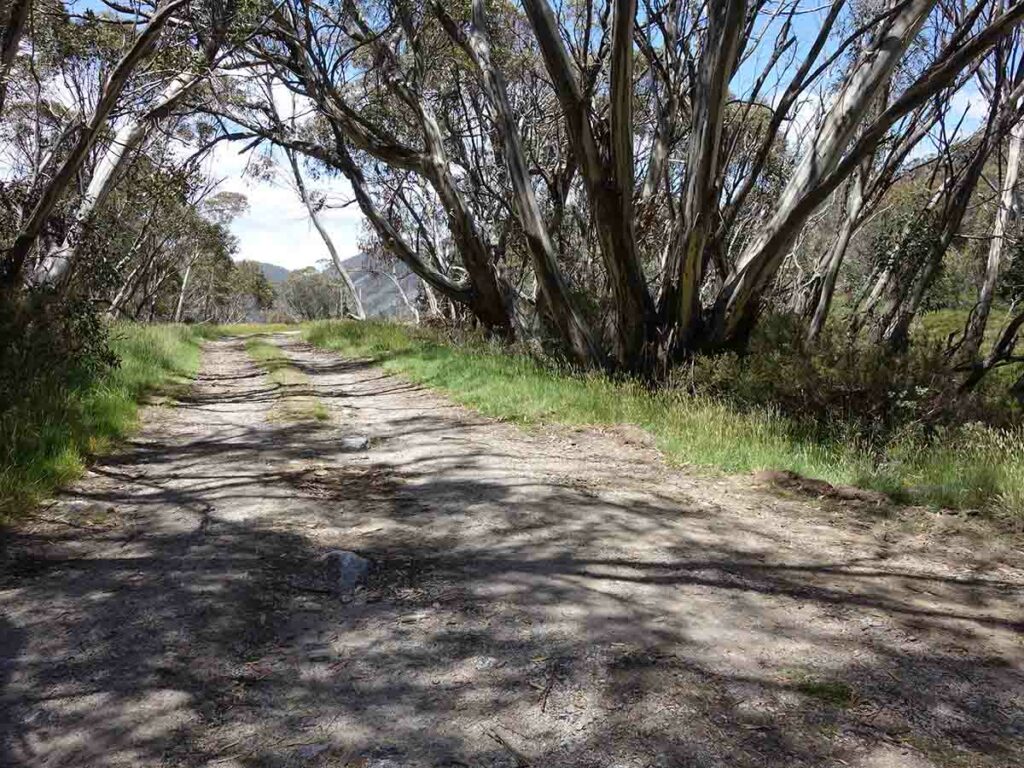
Trail example

Just as you reach the top of the hill you come across a Y intersection – veer right at this stage
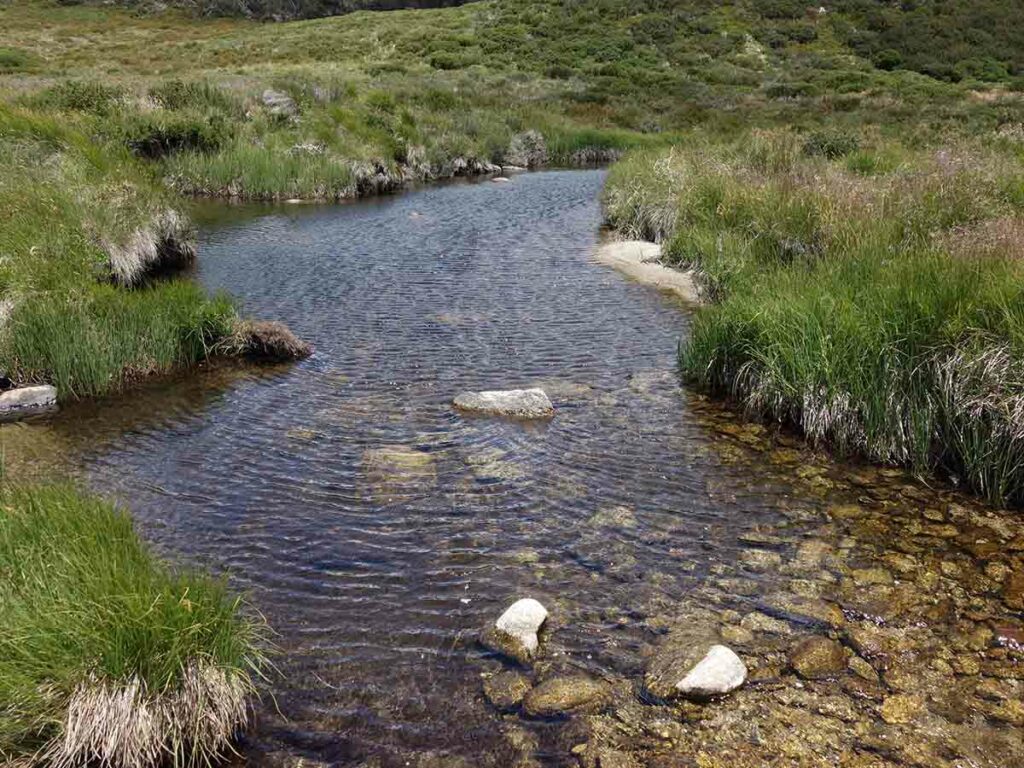
Waterway before Horse Camp Hut. This crossing is about 500 metres before the hut turn off

Horse Camp Hut front view
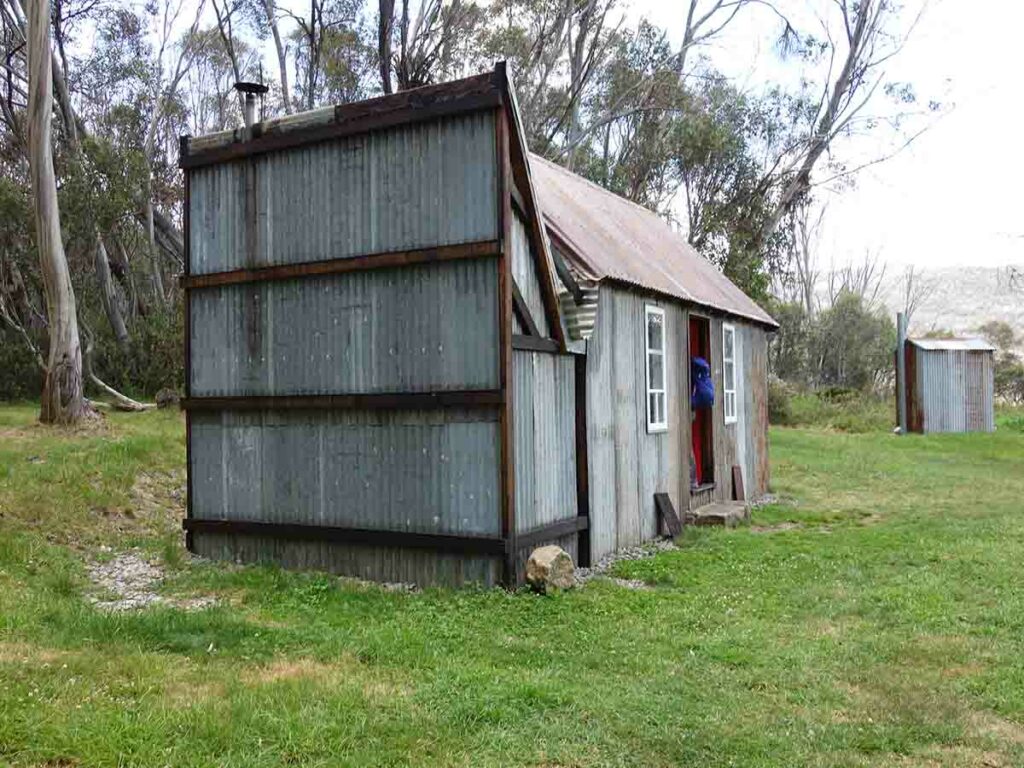
Horse Camp Hut chimney end
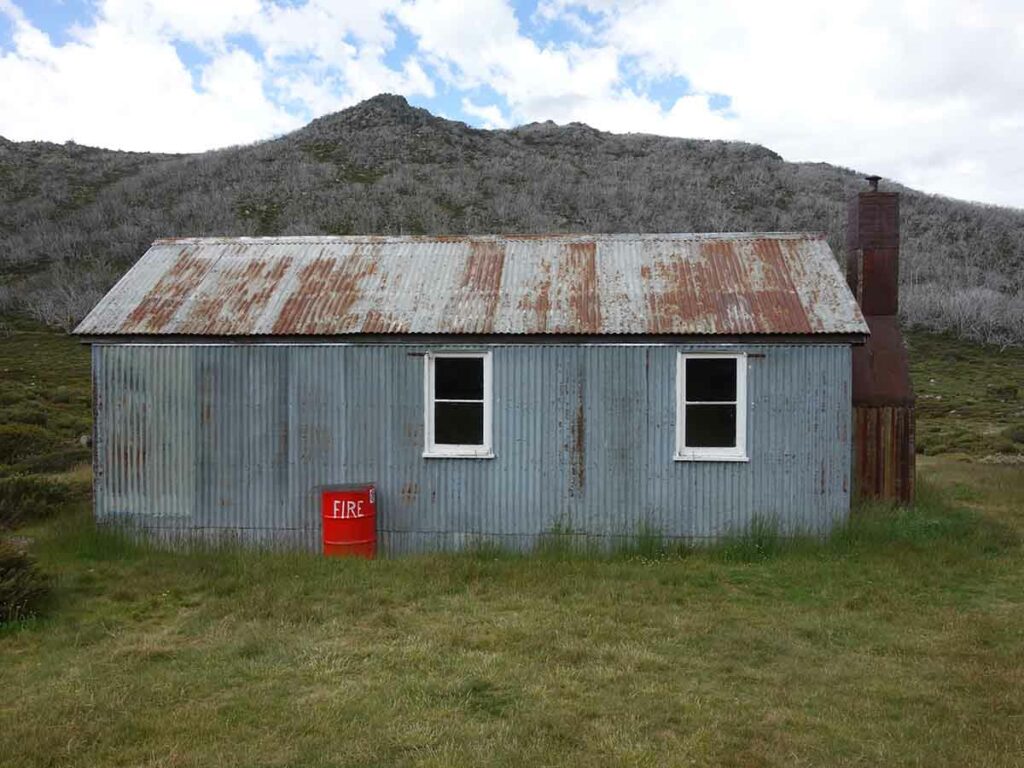
Horse Camp Hut back
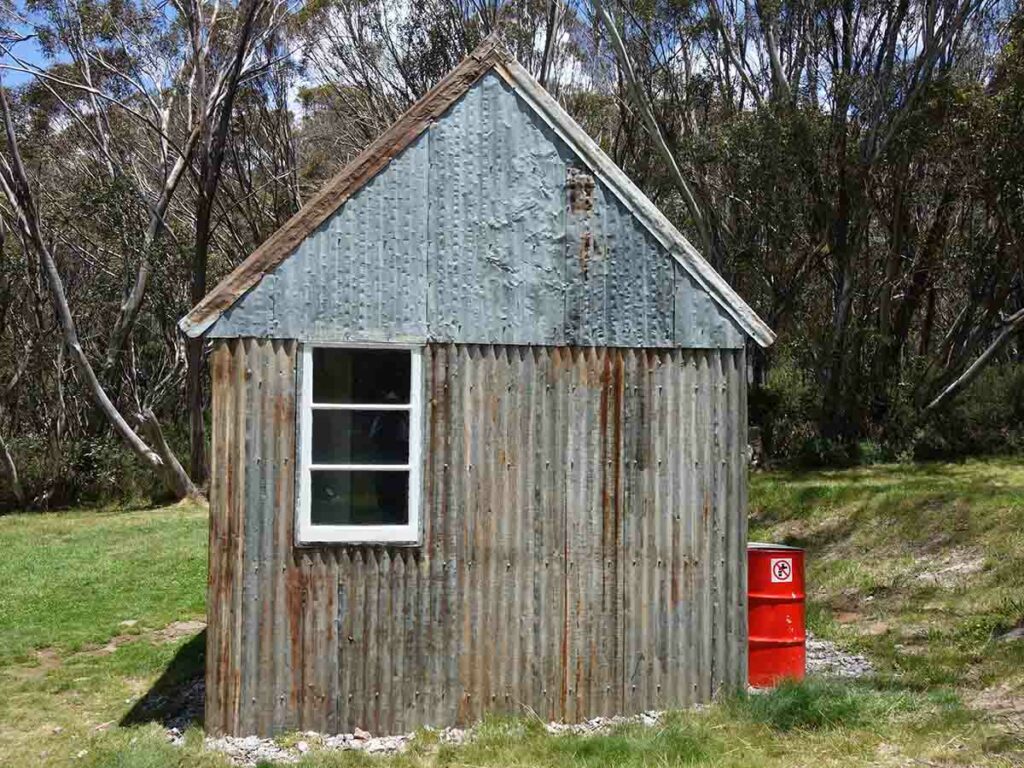
Horse Camp Hut non chimney side

Water drum at each hut

Inside Horse Camp Hut
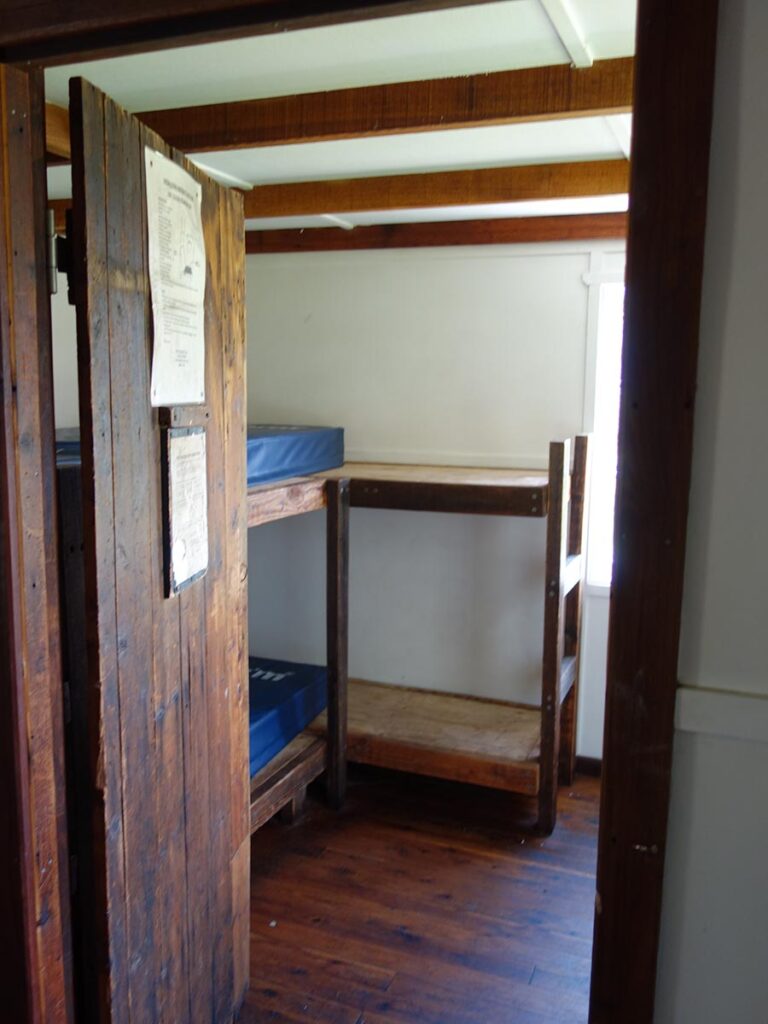
Another view inside Horse Camp Hut
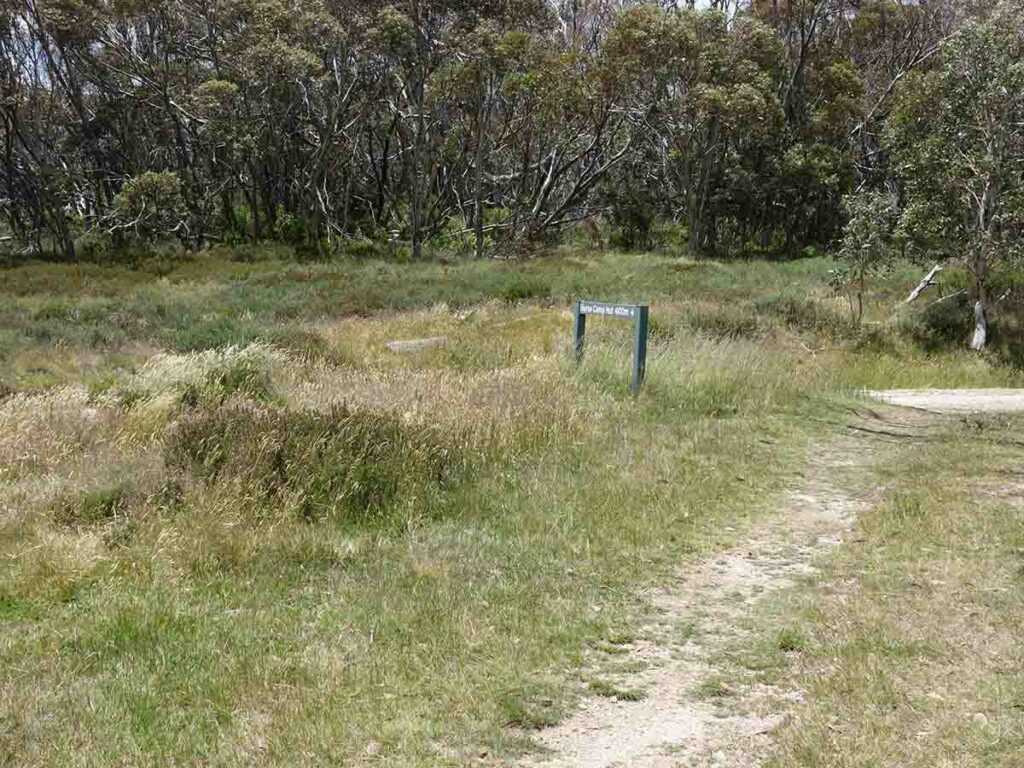
Heading onto the main track from Horse Camp Hut – turn left
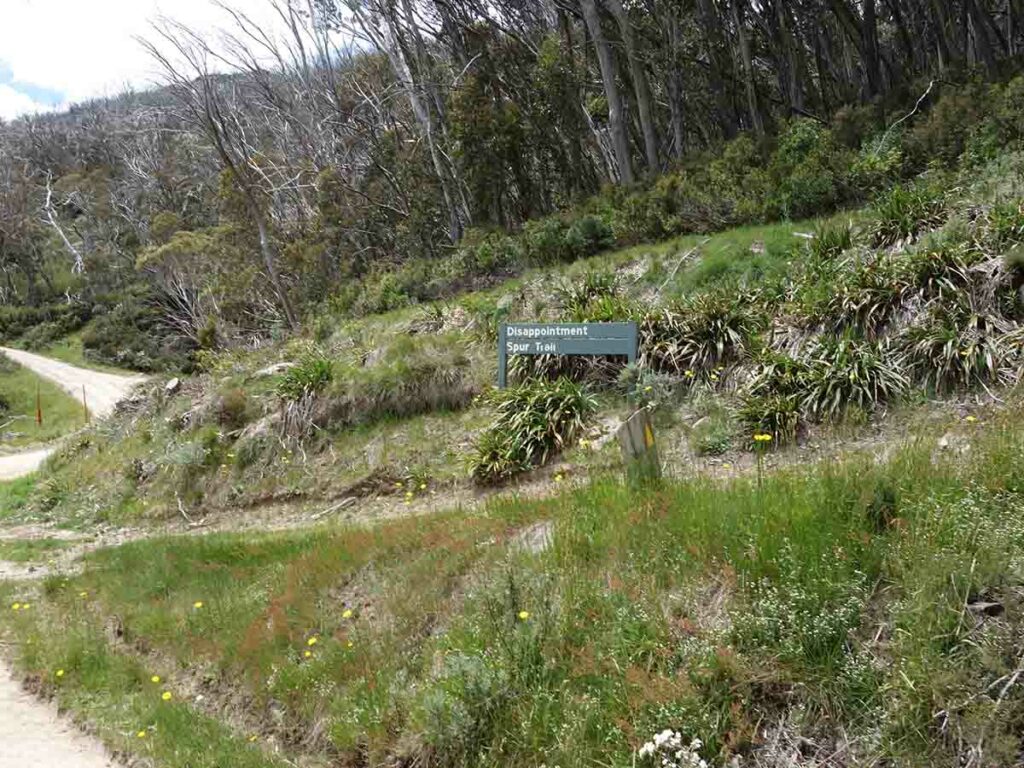
Dissapointment Spur offshoot
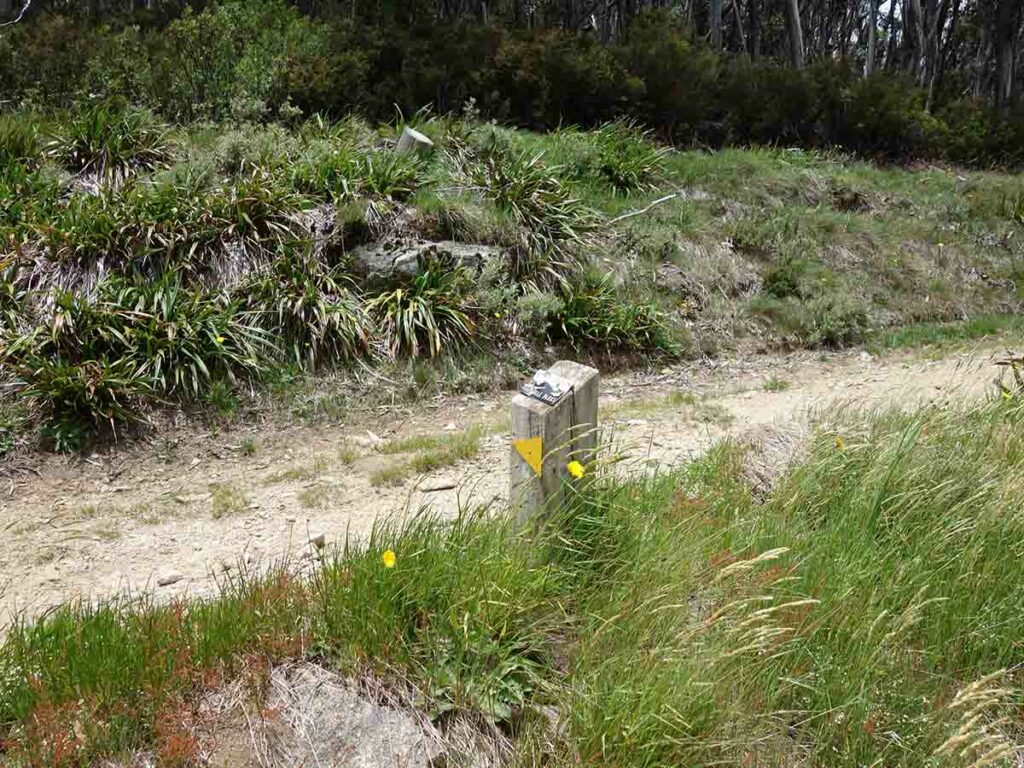
Australian Alps Walking Track
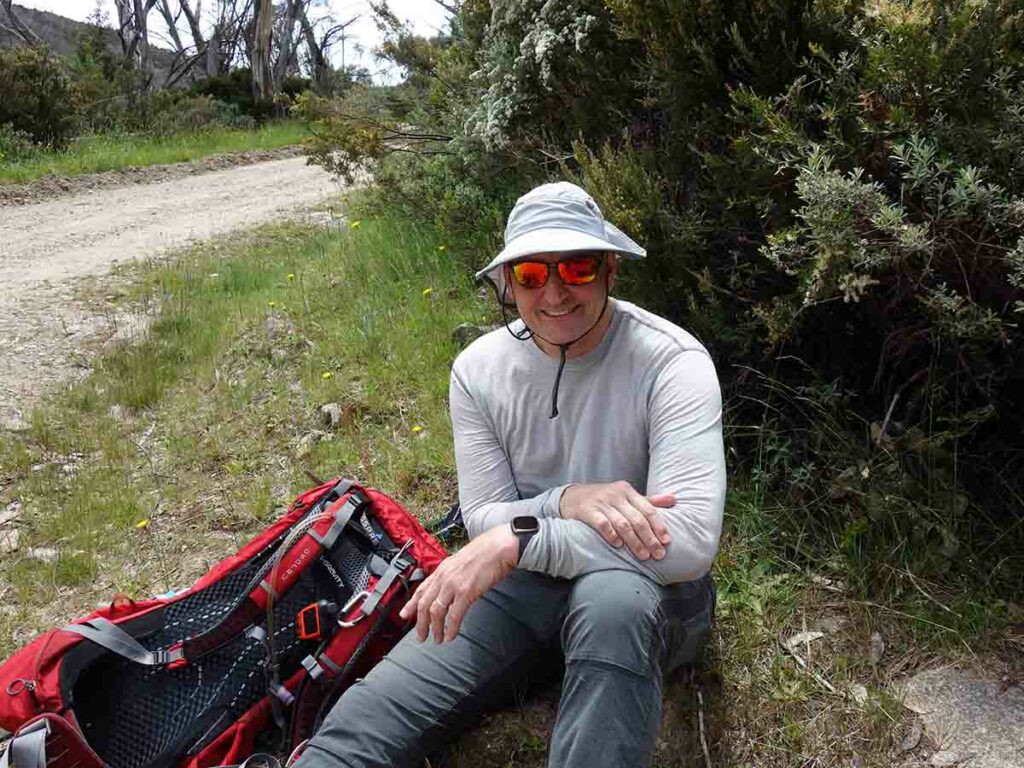
Break time
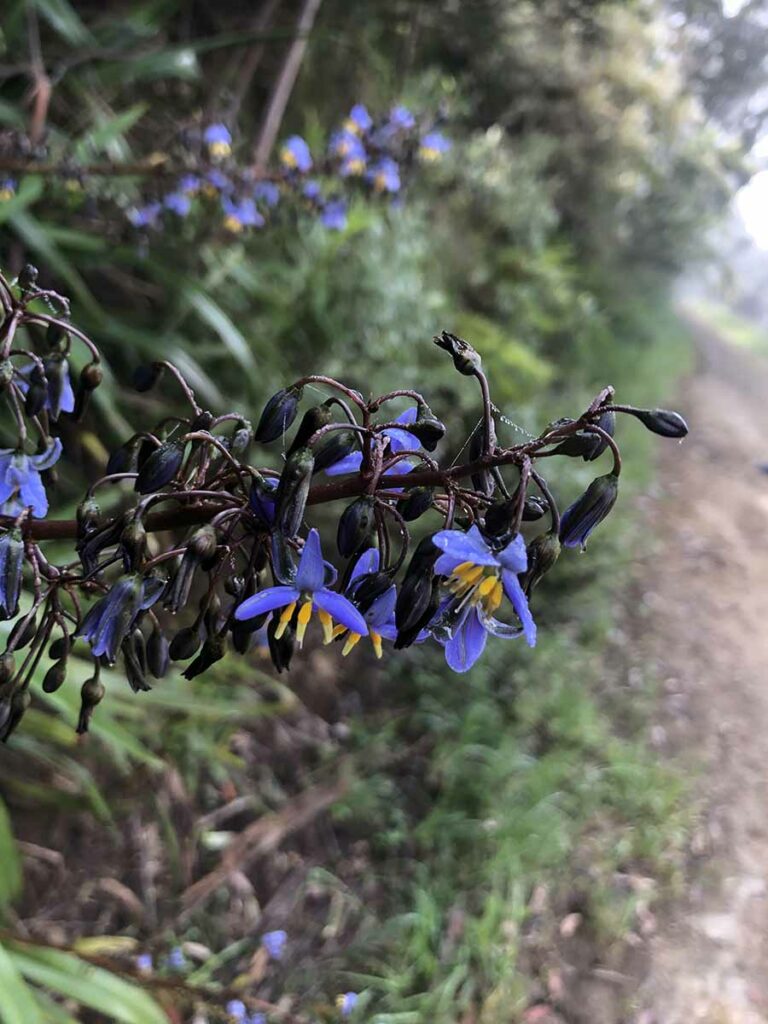
Dianella in flower along the management road
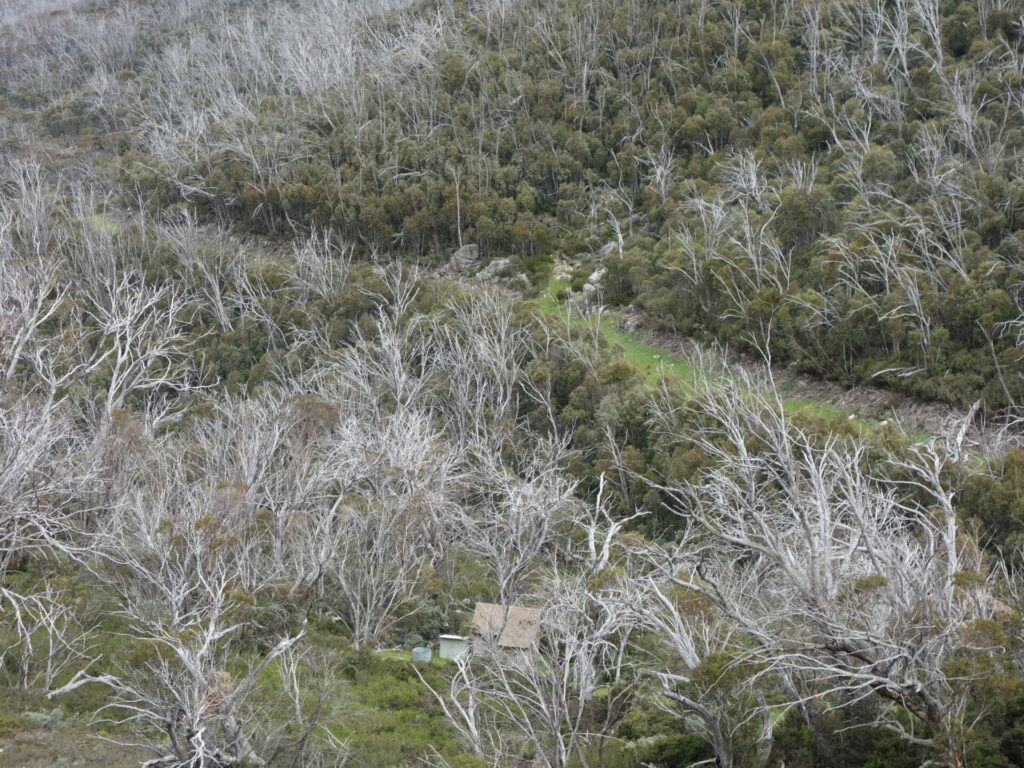
Hydro hut in the valley below – this is a locked hut but worth a look

Aquaduct near the hydro hut
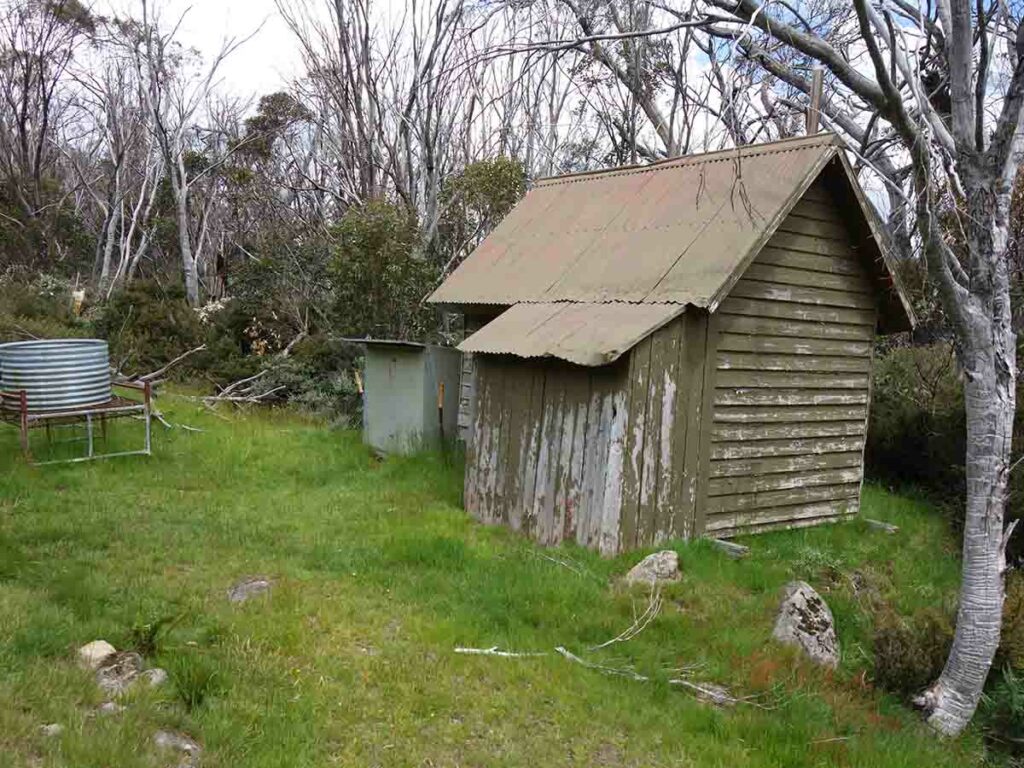
Hydro hut

Billy Buttons
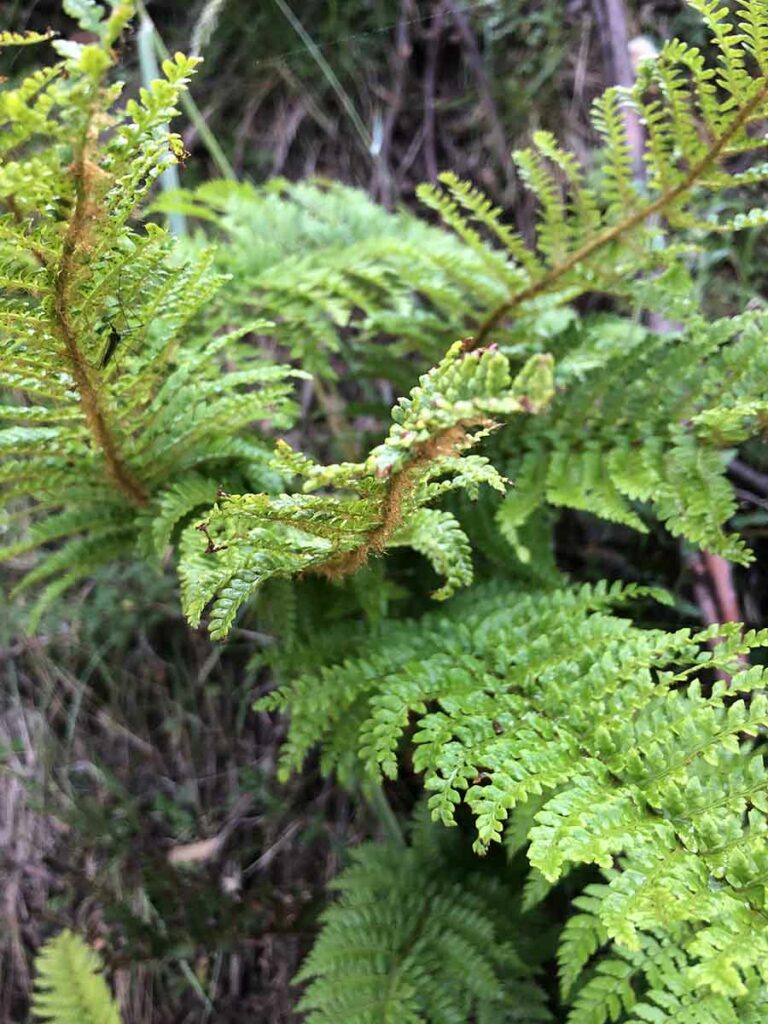
Native fern

River crossing on the approach trail to Whites River Hut

Whites River Hut

Toilet at Whites River Hut

Inside Whites River Hut kitchen area

Approaching Schlink Pass

Schlink Pass, the highest part of the trail and the best place for phone signal
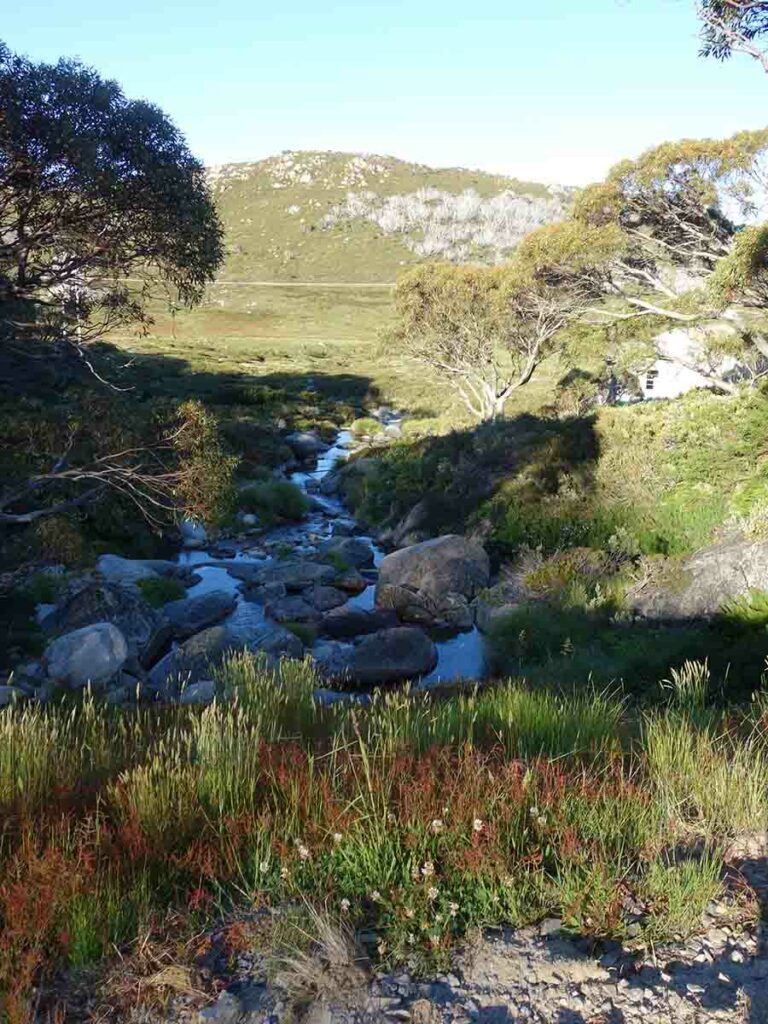
Creek near Schlink Hut
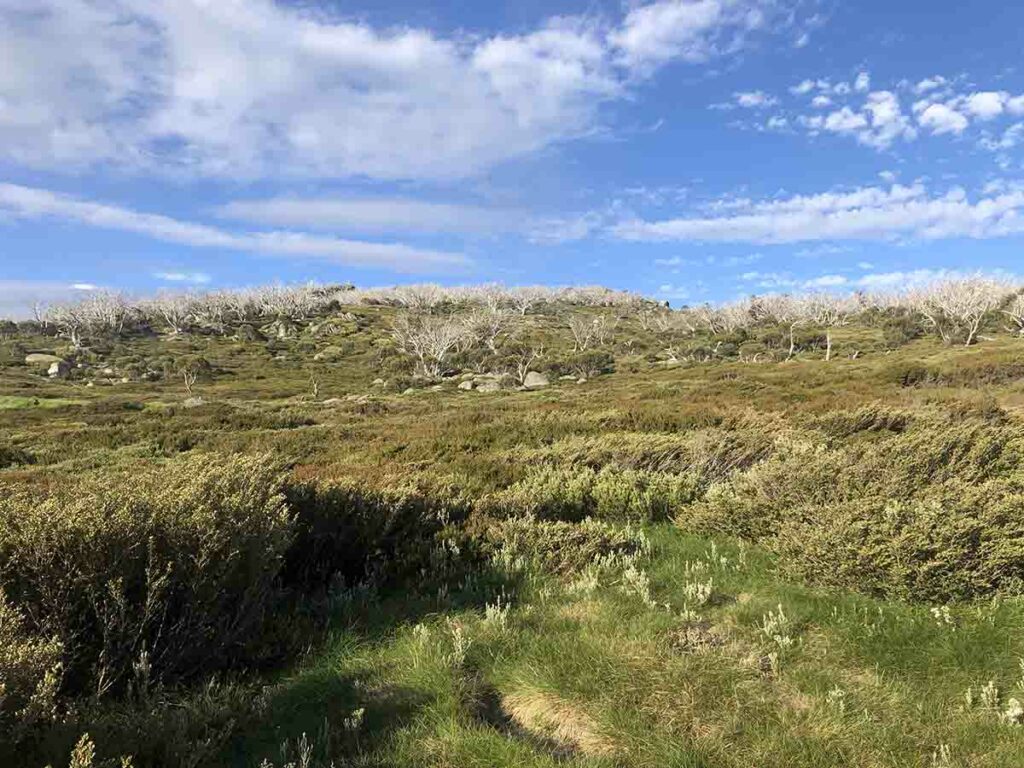
Hill behind Schlink Hut

Schlink Hut
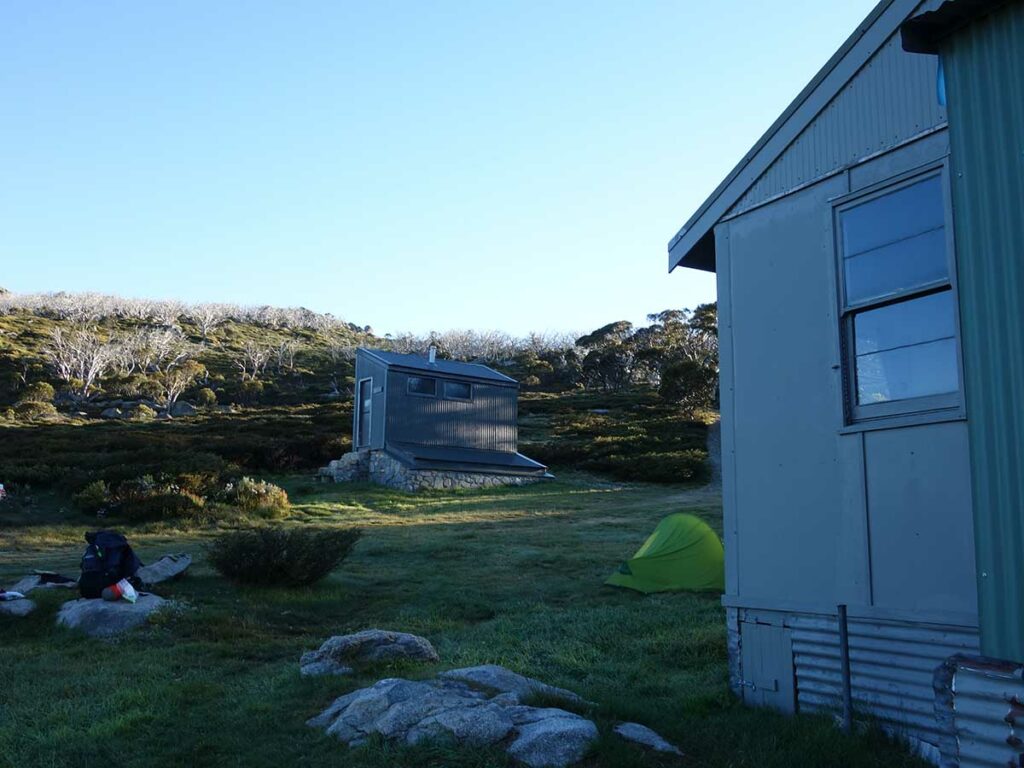
Toilet at Schlink hut

Schlink Hut front door

Tents around Schlink Hut
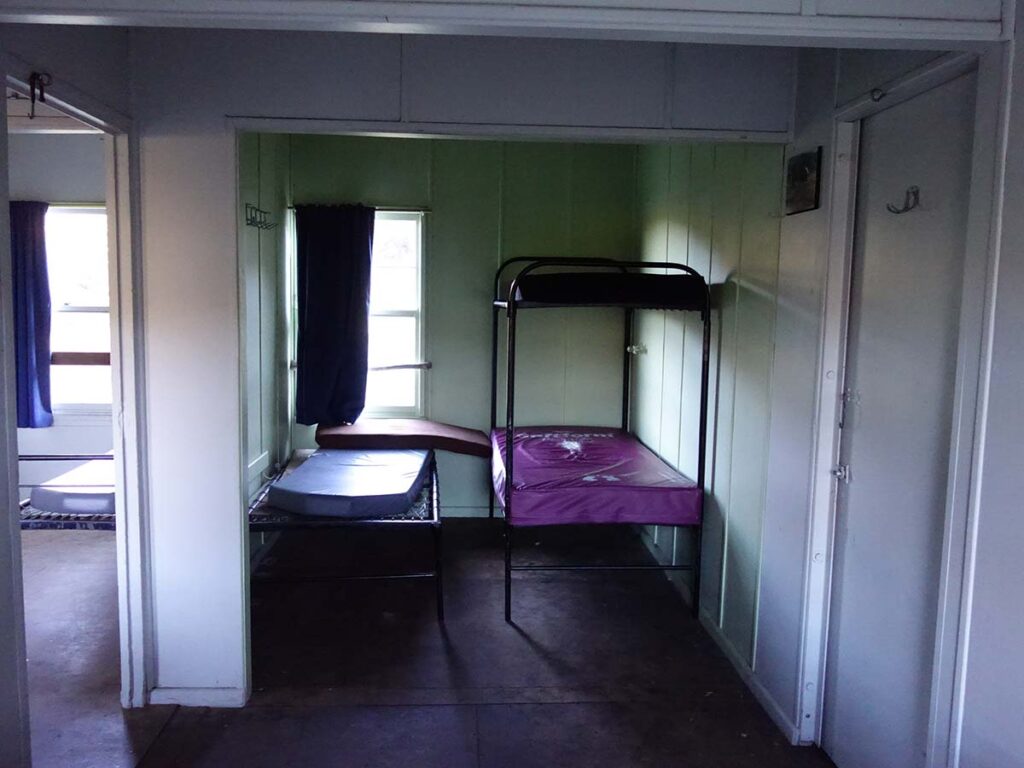
Inside Schlink Hut
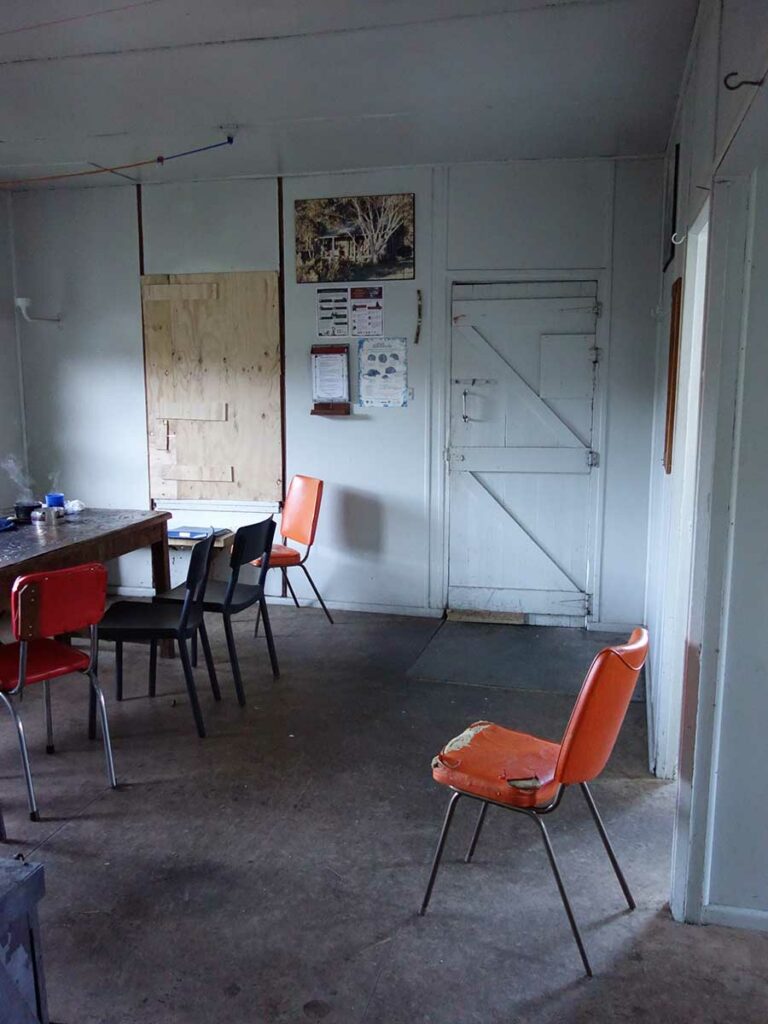
Inside Schlink Hut
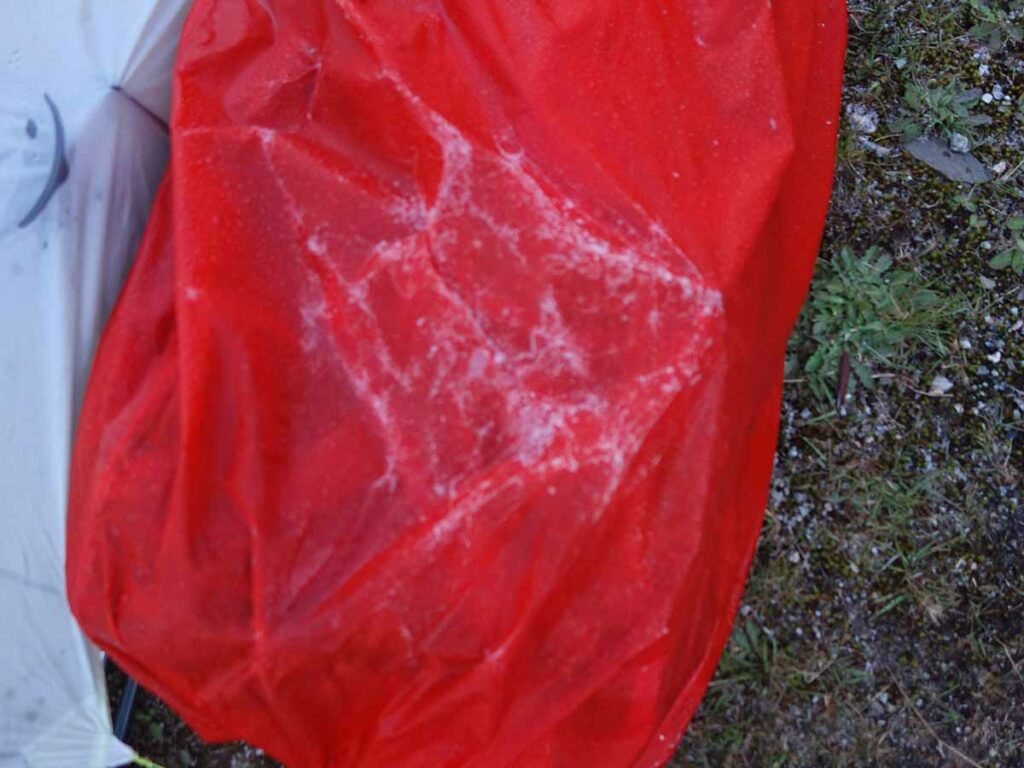
Ice on my pack cover
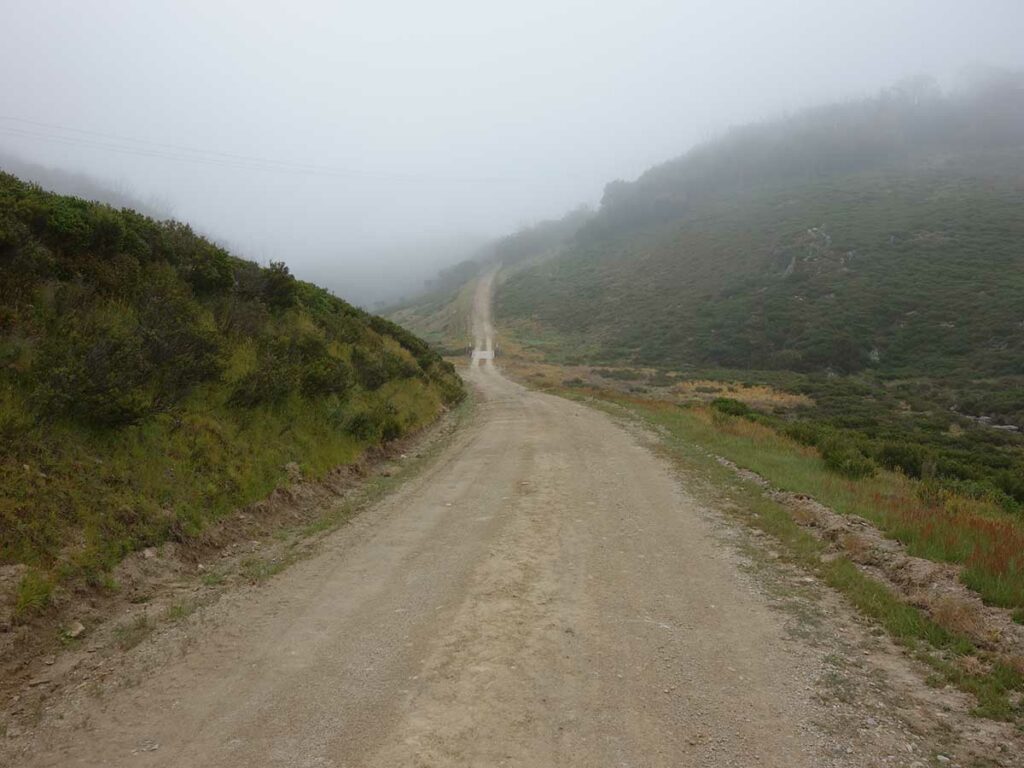
Mist on day 2
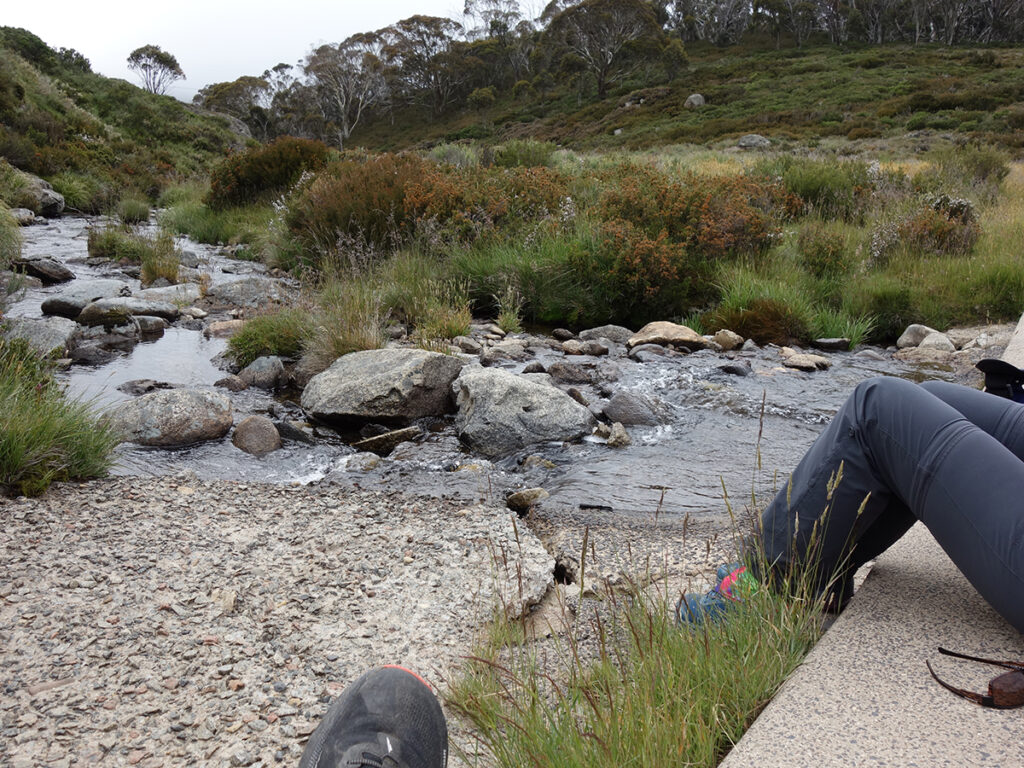
Break time on the way back
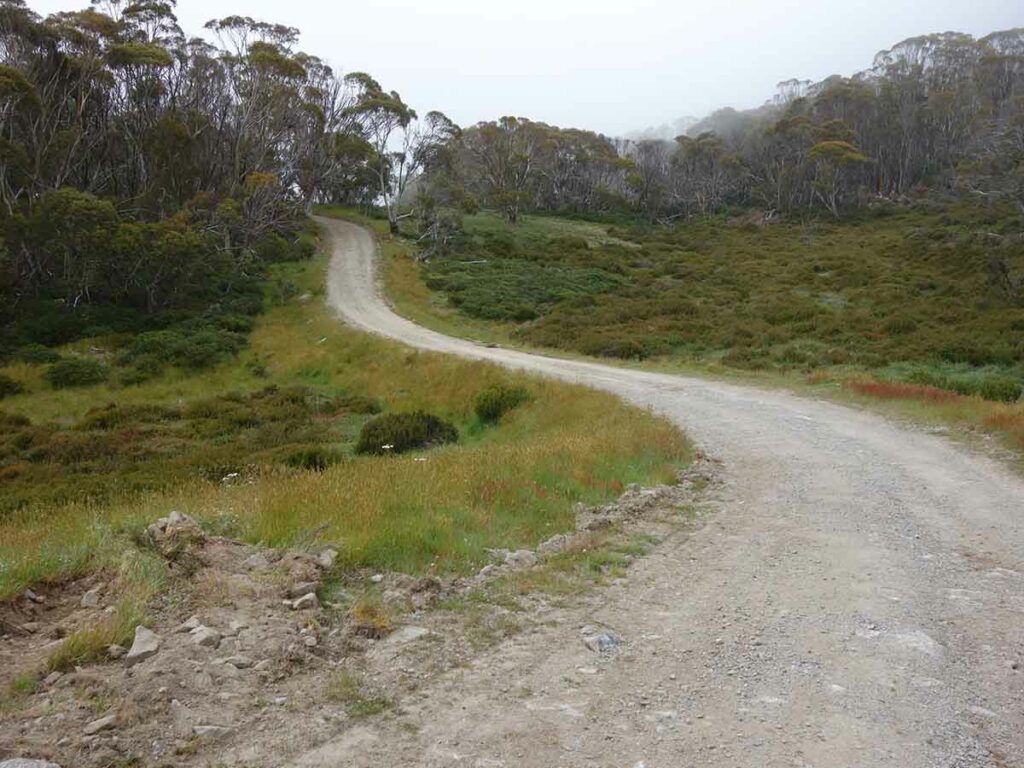
Back up the last small hill
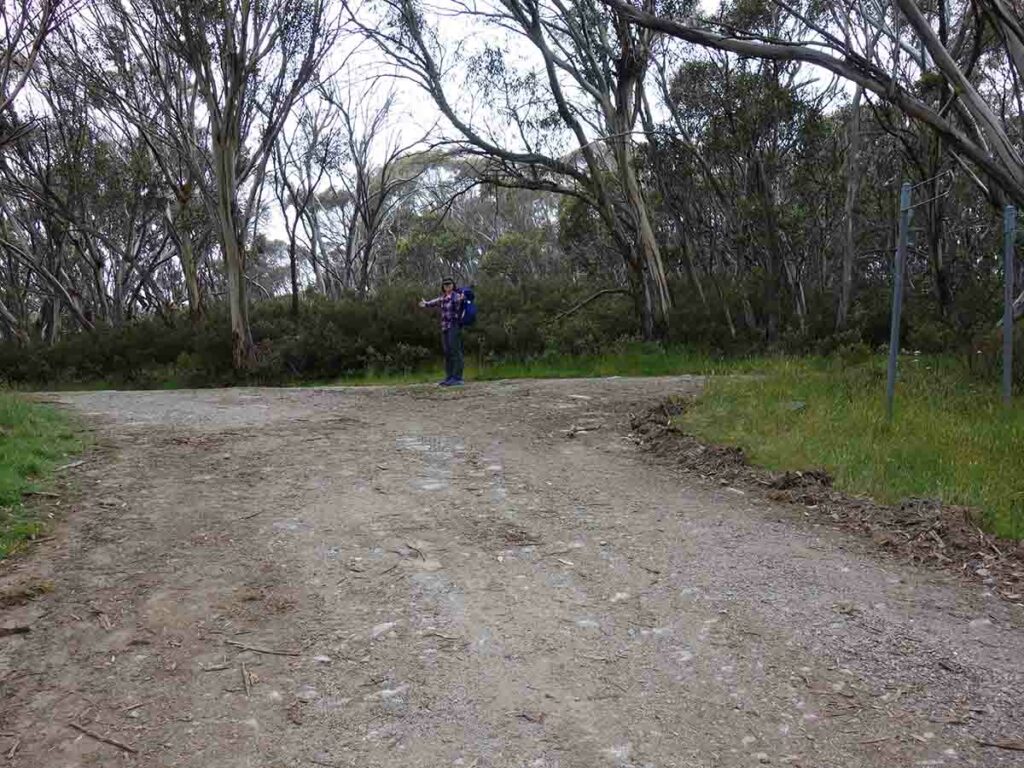
Veer left
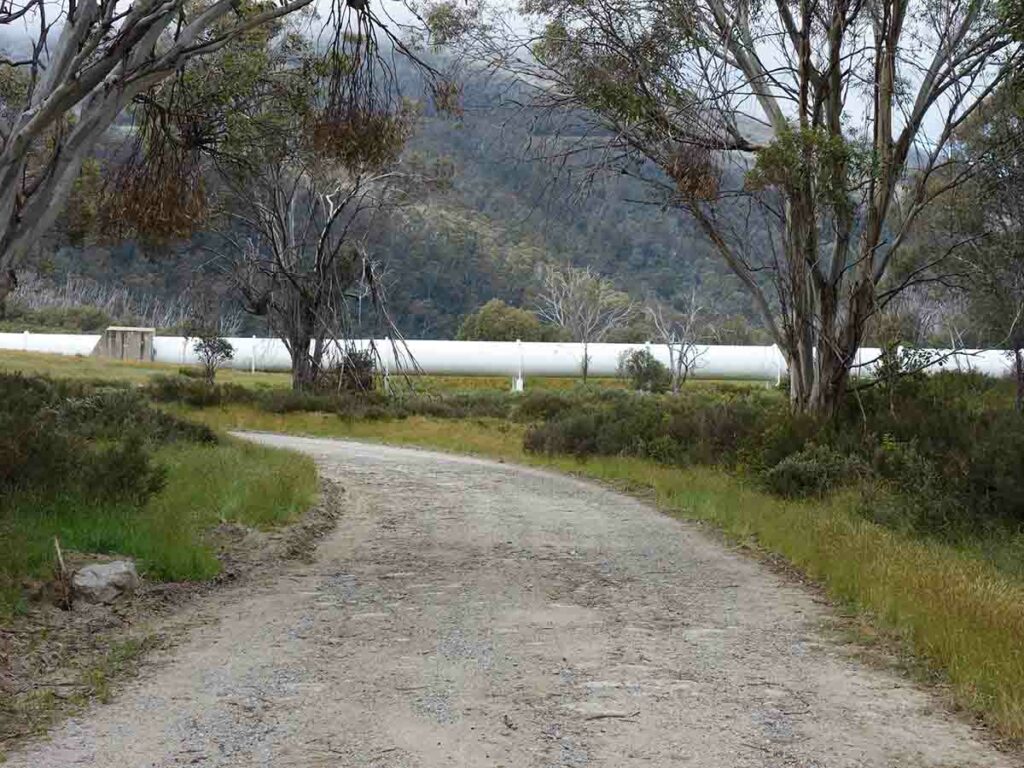
Dam pipe on the way back

Heading back towards the power station

Returning to the power station

Returning to the trailhead

Tim and Gill at Guthega
Walk Video
This video includes a slideshow from start to finish of this walk that includes still and video images to give you a real time idea of what the walk is like
Getting There

Travel to Jindabyne via Cooma and head towards Charlotte Pass. Turn off to the right when you see the road to Guthega. There is a park entry fee which you can pay for as a day or annual pass at the visitor centre in Jindabyne or at the toll gates on nearing the park. The visitor centre in Jindabyne opens at 8:30am most days but check the timings on the website just in case.
Follow Kosciuszko Road and turn right on to Guthega Road. Keep an eye out for the Guthega Power Station turn off just past ‘Island Bend’.

Entering Kosciuszko National Park

Park entry point
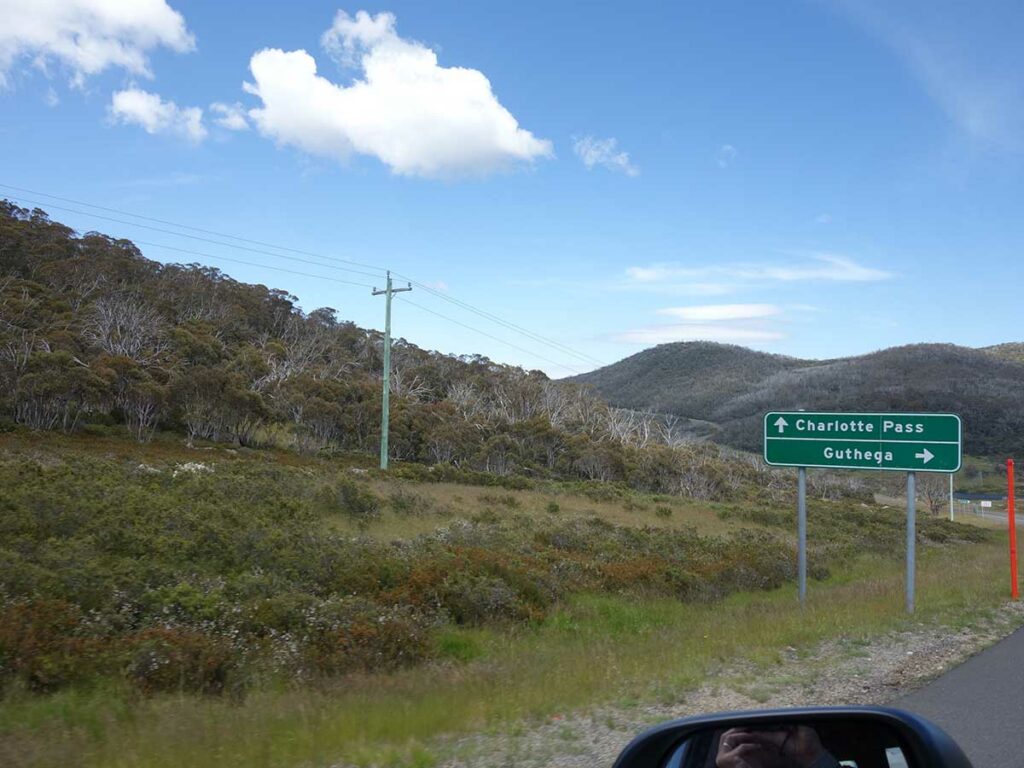
Turn off to Guthega – the sign is on the left pointing right not far from Sponners Lodge

Visitor car park at the Guthega Power Station
Things to Know
- Phone: There is minimal phone signal on this track (Telstra)
- Water: There are plenty of natural water sources along this track but you should filter water
- Toilets: There are toilets at the trailhead and at the three huts included in this walk. We would suggest bringing your own toilet paper
- Trail: This trail is on management road
- Dogs: No dogs allowed
- Camping: Camping allowed
- Sleeping inside the huts is for emergency purposes only so bring a tent
- Other:
- The March Flies can be ruthless from about mid November-mid March so wear long sleeves and long pants – they don’t care about insect repellent!
- Keep an eye out for cyclists as this is also a popular cycling road
Disclaimer
This walk was undertaken by the team from Australian Hiker